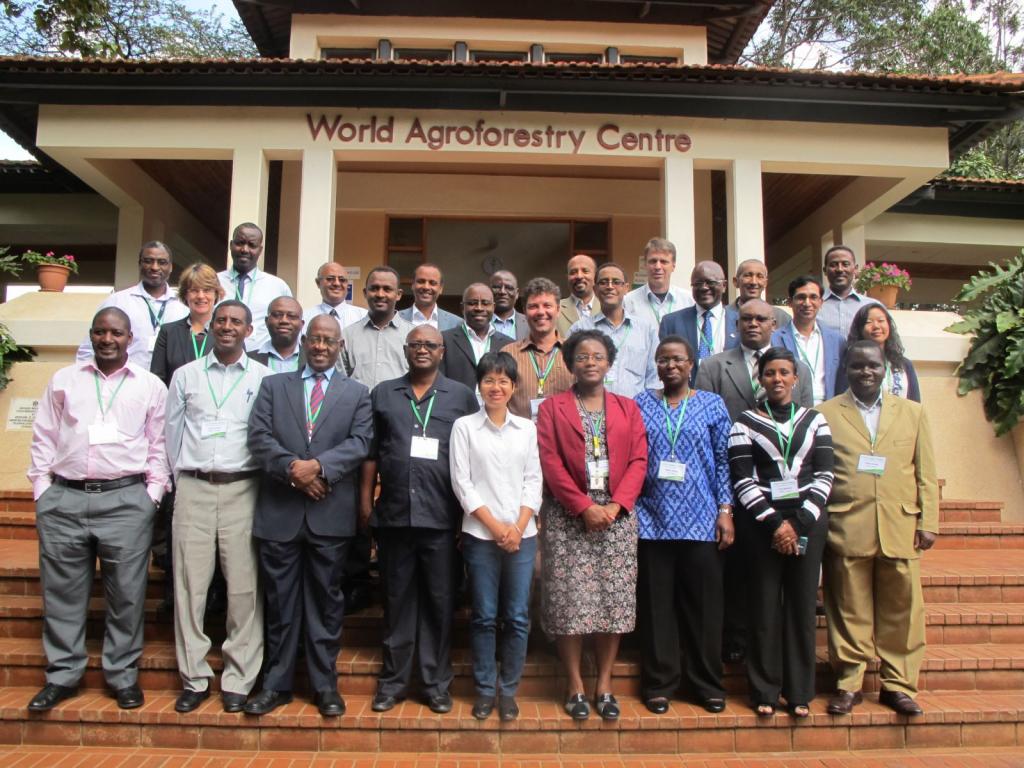Accurate, timely early warning systems for east African policy makers now possible

National governments, relief agencies will benefit from accurate and timely forecasts with additional crop production and food security components.
A new project entitled ‘Integrated Agricultural Production and Food Security Forecasting System for East Africa (INAPFS) was launched in April 2015 in Nairobi, Kenya. The project aims at developing a robust, scientifically sound but user-friendly forecasting system that integrates improved seasonal climate, production and food security forecasts for the east Africa region. This will lead to provision of accurate and spatially disaggregated early warnings to local and national governments and relief agencies to respond to climate crisis in a timely and efficient manner.
“When policy makers have the right information, they make the right decisions and take the right actions,” said Mr. Bwango Apuuli from the IGAD Climate Prediction and Applications Centre (ICPAC) during the launch workshop at the World Agroforestry Centre (ICRAF). The workshop brought together participants from national weather services and disaster risk management offices in Ethiopia, Kenya, Tanzania, Uganda and Burundi, and NGOs and research institutions operating in the region.
In the context of climate change and food insecurity “early warning information is now a necessity for all decision makers to enable them take timely action against risks such as droughts and floods,” continued Bwango Apuuli on behalf of ICPAC director Dr. Guleid Artan.
Led by the International Maize and Wheat Improvement Center (CIMMYT), INAPFS project is a multi-partner initiative involving several institutions: International Crops Research Institute for the Semi-Arid Tropics (ICRISAT), International Center for Tropical Agriculture (CIAT), ICPAC, Famine Early Warning Systems Network (FEWS NET), the UN World Food Program (WFP), and Partnership for Economic Policy (PEP). Furthermore, there is a strong linkage with national weather services and disaster risk management and food security offices in the targeted east African countries. According to Dr. Clare Stirling from CIMMYT, her organization's involvement in the project was quite timely considering their involvement in climate change research globally with an aim to help vulnerable communities in maize and wheat based farming systems to adapt to climate change.
The project is supported by CCAFS under the theme climate risk management (flagship 2). Moreover, INAPFS is one of nine core flagship 2 projects globally that will contribute to the vision of supporting the livelihoods of farmers across Asia, Africa and Latin America by effective climate information services, and timely and well-targeted food security safety nets.
“We are working with governments, private sector, agro-advisory service providers, non-governmental organizations, national agricultural research systems and international research institutions to build together a food and nutrition secure east Africa by 2025,” said James Kinyangi, Program Leader of CCAFS East Africa (EA). The INAPFS project is one of three projects under flagship 2 in the EA region that will contribute to the 2025 vision.

Stakeholders who attended the inapfs launch workshop at the world agroforestry centre. PHOTO: CIMMYT
INAPFS workshop methodology
The first day of the workshop was mainly dedicated to presentations that highlighted the general overview of the new project, the focus of CCAFS’s East Africa program, and experiences from major regional and international organizations (ICPAC, FEWS NET and WFP) operating in the region that are involved in the provision or use of early warning systems. In addition, presentations were made on potential tools (e.g. CRAFT) and methodologies that are going to be considered as inputs to the new project. Apart from that, group discussions were made on the rational, objectives and approach of the project and on the opportunities, strengths and limitations of the current early warning systems being used in the region. The second day of the workshop was spent on project planning and discussing partnerships, data exchange and communication.
During the group discussions, it was highlighted that the current early warning systems have been quite useful but are mainly for humanitarian purposes. Subsequently, the current project would enhance forecasting skills by adding accuracy (spatial and temporal resolutions) and incorporating additional components of crop production and food security.
“We need crop production forecasting models that are suitable to our country and local conditions. We don’t want a model to be imposed on us that doesn’t solve local problems,” said Michael Nkalubo, Commissioner of Ugandan Meteorological Authority.
Following this workshop, a common understanding has been created on the different component activities, and how those activities would finally integrate to help achieve the intended project goal. In addition, the proposed work plan was refined and responsible partners assigned to each of the project activities. More importantly, partners and stakeholders have identified what role they could play to achieve the project’s objectives.
To receive updates from CCAFS, subscribe to our feeds. Follow us on Twitter and Facebook.
Dr. Kindie Tesfaye works at CIMMYT as a Crop Modeler/GIS expert. Blog editted by Vivian Atakos, CCAFS EA Communications Specialist.



